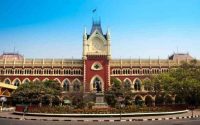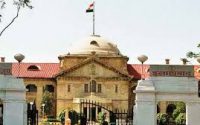$100 Website Offer
Get your personal website + domain for just $100.
Limited Time Offer!
Claim Your Website NowGovt, judiciary deadlock over vacant posts in HCs continues.
Source – hindustantimes.com
The Union government and the higher judiciary appear to be at loggerheads again over judicial appointments, with each blaming the other for the over 410 vacancies across high courts in the country.
Last week, a Supreme Court bench headed by justice Sanjay Kishan Kaul sought an answer from the government on whether appointments on which there is unanimity between the government and the SC collegium can be finalised in six weeks.
“We are not examining as to who is to be elevated and on what consideration. We are re-emphasising our endeavour is only to see that where all stakeholders are on the same page the appointments should go through in six months,” the court said.
Government officials familiar with the matter, however, contended it was the judiciary which did not send proposals for the appointment of high court judges on time. There are 410 vacancies in 24 high courts across the country that together have a sanctioned strength of 1,079.
One of the officials, who asked not to be named, said the Centre was yet to receive recommendations for 221 vacancies, some of which were pending for a decade.
For instance, the official said, the Chhattisgarh HC has not forwarded recommendations to fill up vacancies that arose in 2011 – the posts were to be filled under lawyers’ quota. Appointments to high courts are done under two categories – one where subordinate court judges are promoted, and the other where advocates get elevated directly to the HC.
According to a second officer, in the Allahabad high court, recommendations for the posts that fell vacant in 2015 under the advocates’ category are yet to be made. He added that the Bombay, Delhi, Jharkhand, Madhya Pradesh, Orissa and Punjab & Haryana high courts, too, have delayed proposals for unfilled vacancies under the lawyers’ category.
Meanwhile, the Andhra Pradesh, Calcutta, Jharkhand, Madhya Pradesh, Orissa, Rajasthan and Telangana high court have not finalised lists for posts, meant for trial court judges, which fell vacant over the last five years. “Recommendations have been sent to us, but they have been selective,” the officer added.
However, a senior Supreme Court justice, on condition of anonymity, said the real problem was that the government was also delaying appointments of those candidates who were cleared by both collegium and executive.
During an SC hearing last week, the Centre argued that the issue with regard to appointments to high courts was an administrative matter, and discouraged the court from taking up the case. But the court rejected the stand, and sought an explanation from the Centre as to why appointments cannot be notified within six weeks of collegium approving the names.
Government officials also say that appointments have been delayed because the Memorandum of Procedure (MoP) – as directed in the top court’s NJAC (National Judicial Appointment Commission) verdict in October 2015, is stuck because the Centre and top judges are not being able come to an agreement.The NJAC judgment had struck down the NJAC Act, 2014, which allowed the executive’s intervention in judicial appointments.
But the court suggested framing of a new MoP to lay down a fresh set of guidelines for making appointments to the higher judiciary. The verdict required the SC to set up a secretariat to screen candidates before they were finalised. No substantive movement has happened on this front.
Senior Supreme Court advocate Ajit Sinha said both the judiciary and executive are to be blamed for the shortage of judges. He said MoP must be finalised, drawing a time limit for both the judiciary and government to appoint judges. “At present, there is no outer limit for the HC or the government to send the recommendation in case a vacancy arises. The MoP must have written instructions for both the institutions and this should be put in public domain so that anyone can question in case there is a failure to comply with it,” Sinha said.



